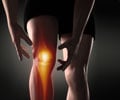How do you Diagnose Patellar Instability?
Diagnosis involves the following approaches:
- A medical history and physical examination will help the physician in diagnosing the patellar instability
The clinical examination for acute cases would show either of the following: - Effusion: An abnormal amount of fluid in the knee joint that oozes out
- Contusion: A bruise resulting from leakage of blood from damaged blood vessels into the tissue spaces underneath the skin
- Deformity: The knee may become deformed
- X-ray: An X-ray maybe advised to confirm the instability. However, the X-ray may be normal if the kneecap returns to its normal position
- Magnetic Resonance Imaging (MRI): An MRI may be advised to assess the damage, if any, to the cartilage, which may be caused by traumatic patellar dislocation, patellofemoral ligament tear or knee joint effusion
How do you Treat Patellar Instability?
Patellar instability could be due to various reasons. It is important to diagnose the cause of patellar instability for instituting effective treatment.
At an early stage, the dislocation can be treated without surgery. The typical non-surgical treatments include the following:
- Anti-inflammatory Medications: Non-steroidal anti-inflammatory drugs (NSAIDs) such as ibuprofen, celecoxib, naproxen, and diclofenac, among others may be used to relieve pain, swelling and inflammation. In severe cases, intra-articular injections of corticosteroids may be administered
- Restriction of Activities: These include Resting, Ice application, Compression and Elevation (RICE)
- Assistive Devices: These are useful for relieving pressure on the knee. These include knee braces, splints and crutches
- Physical Therapy: After the specified period of rest, physical therapy is provided to strengthen the muscles of the knee. This helps to prevent the sliding of the kneecap from the groove and increase mobility. Patellar instability exercises include thigh strengthening exercises, which help to heal the injured knee
In some cases, if the knee pain does not subside with non-surgical interventions, surgery may be required. Some surgical interventions are briefly highlighted below:
- Arthroscopy / Cartilage Procedure: There could be cases of patellar dislocation where the cartilage can become loose and remains in the knee. This loose body is removed surgically
- Lateral Release / Ligament Tightening: In cases where there are recurrent patellar dislocations, despite non-surgical treatments, surgical procedure may be required to place the patella in the appropriate position or reconstruct the patellofemoral ligament
- Bone Realignment: In this procedure, the patellar tendon is moved to a new position on the tibia, thereby facilitating the movement of the kneecap through the femoral groove
How to Prevent Patellar Instability?
Patellar instability can be prevented by adopting the following approaches:
- Maintaining a healthy weight
- Exercises which strengthen the leg muscles to reduce chances of knee injuries. Some of the exercises include:
- Squats and leg lifts to strengthen the quadriceps
- Hamstring curl exercises
- Exercises to strengthen the inner and outer thighs

- In sports, wearing protective knee covers and protective gear helps in preventing knee injuries







